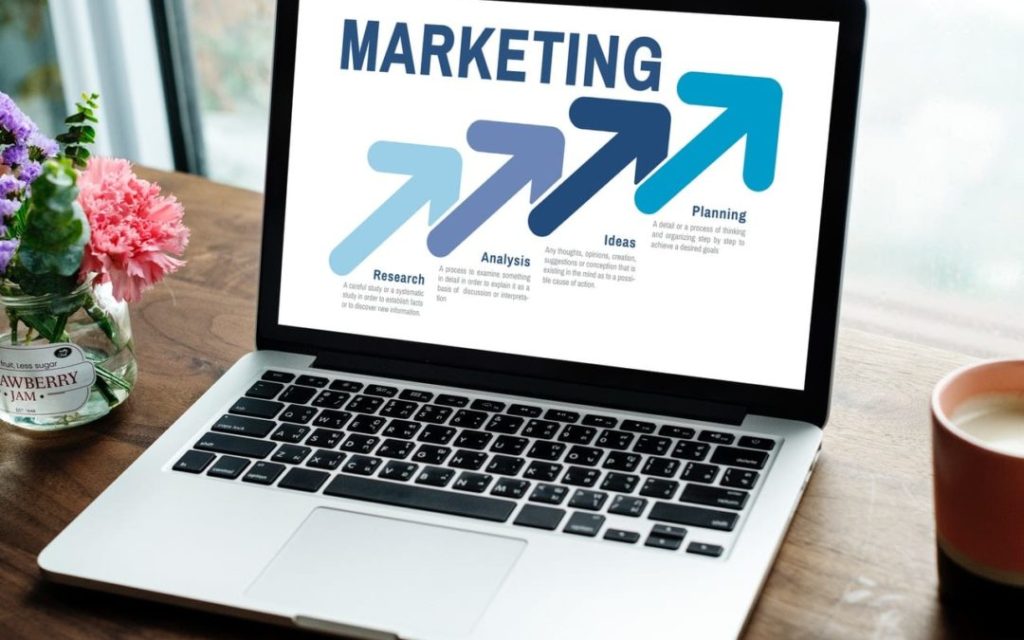In The Ordeal of Change Eric Hoffer writes…
“In times of change, learners will inherit the earth, and the learned will find themselves beautifully equipped to deal with a world that no longer exists. The illiterate of the 21st century will not be those who can’t read and write, but those who cannot learn, unlearn and re-learn.”
And when it comes to inbound marketing, we’re certainly talking about a gigantic, and often agonizingly painful, unlearning and relearning process.
Human nature is conditioned to do more of the same, but doing it harder and longer.
In Change Or Die: The Three Keys to Change at Work and in Life, Alan Deutschman tells us that over 80% of people refuse to change their lifestyles even when their doctors tell them that unless they change, they most probably die pretty soon.
Intellectually we may know that trying harder (good ol’ Boxer’s approach to work in George Orwell’s Animal Farm) is as futile as trying to nail jello to a tree, but thanks to thousands of years of genetic programming, we do it anyway.
But when it comes to inbound marketing, we have to learn to do, following the old Monty Python wisdom…
Table of Contents
ToggleLess But Something Completely Different
And this less but something different is, if you want to grow your business reasonably consistently and predictably, the replacement of inconsistent and unpredictable human performance with consistent and predictable system performance.
Yes, there are many aspects of your business that can’t be automated, but a big chunk of marketing can be.
Modern businesses, due to their complexities, can no longer rely on superstars’ heroic performance. Every now and then, and at one point finally, even super heroes become super zeros.
It’s not hard to imagine that in most businesses, the cost of the work force takes up a significant part of the company’s variable costs.
We also know from a McKinsey study that 1% reduction in variable costs can lead to as high as 7.8% increase in operating profit.
This number alone should be a good incentive for most business owners to stop regarding headcount increase as business growth. We can call it business enlargement, but definitely not demand generation.
The other area that spurs business owners to marketing automation is that the buyer environment has changed. Once upon a time, even high-priced solutions could be transacted in “one fell swoop” in a short space of time at just a very few meetings.
Today, the buying cycle is much longer than it was only 10 years ago.
MarketingSherpa reports that 11% of B2B purchases take over 12 months from initiation to completion.
Another important consideration that adds a huge pile of money to the cost of sales is that while 10 years ago, and definitely before the Internet, the buying process was relatively linear, today it’s an iterative process. When you look at your sales funnel you see that even the slightest forwards movement of your prospects is preceded and succeeded by lots of sideways movements.
That’s when prospects consume a significant amount of your content without any forwards movement. And even after consuming enough content, they may not move forwards but backwards.
As the buying behaviour has changed, we have to change our behaviour about selling.
One big change is that specialization highly valued and appreciated. It means companies have to shift from mass marketing to niche marketing. Both lead generation and lead conversion processes must be highly personalized to your buyer persona, the perfect client who could be interested in doing business with you.
Also, since buyers have lots of alternatives besides doing business with you, you have to differentiate your business from the masses and effectively communicate this difference.
But before we go into it…
Let’s Start Automation With Non-Automation
This is it. Automation must start with manually designing and overseeing your marketing automation process. Here you have to define…
• Your target market and buyer persona (perfect client profile).
• Your message that represents your products/services.
• Your method of taking your message in front of your target market.
• The mechanism to bring interested buyers into our sales funnel for decision-making.
Your Target Market And Buyer Persona (Perfect Client Profile)
It’s far too easy to say that your target market is, let’s say, small businesses.
But what small businesses?
Product or service businesses?
B2B or B2C businesses. Or even B2G (government)?
How small are those businesses? A couple doing network marketing from the kitchen table or a 50-person manufacturing plant generating $20 million in annual revenue?
The reality is that there is huge perceived value in specialization. A “consulting firm” that consults on everything with executives, entrepreneurs and small business owners is likely to be price-shopped, because such a firm is easy to replace.
Address Your Market’s Biggest Problems And Links To Your Products/Services
Then you have to create the messages that address your market’s biggest high-level problems. High level problem is a problem that is recognized as a problem by the top executives in the boardroom. Those high-level problems are related to declining sales, shareholder value and similar high-level performance indicators.
People who can address those issues are treated as respected experts and paid generously. However, website graphics, search engine ranking and Facebook likes are not boardroom problems, and people who address those issues are traded like sacks of potatoes.
Once you’ve established your market’s biggest problems, you can start linking those problems to solutions, that is, to your products and services.
Do you plan to use field salespeople or do you want your sales copy do all the work?
Both approaches work, but you need slightly different copy. Keep in mind that if you send salespeople to buyers who are not ready to meet salespeople, it can backfire.
If you sell expensive and highly customized services, then you need salespeople. But if you sell SaaS services, you can use copy to do all the sales work.
Your Method Of Taking Your Message In Front Of Your Target Market
This is very industry specific. If you have a broad target market, here you’re in trouble again because you have to invest in several marketing platforms.
• Target market A, small, local coffin carving companies, may be active on Facebook but not on LinkedIn.
• Target market B, Fortune 500 CEOs are likely to be active on LinkedIn but not on Facebook.
• Target market C, retired people with diabetes may use only the Yellow Pages.
Now you have to set up three platforms because clients could come from either of them. But this scattered approach can also drive you as crazy as two waltzing mice.
You’re better off focusing on one single target market, with one specific perfect buyer type.
You can set up…
1. Perfect client company.
2. Perfect buyer – the buyer with whom you’re building the relationship.
3. Perfect project – The types of projects/work you enjoy and the type that you want to stay away from.
Once you have a detailed client profile, you can adjust everything you do and say to that imaginary person.
The Mechanism To Bring Interested Buyers Into Our Sales Funnel For Decision-Making
This is a step-by-step process of how you catch buyers’ attention, keep their interest and escort them from first contact to the decision-making point.
This is where you can set up your sales funnel and anticipate buyers to move inside your funnel.
You write every piece such that they allow readers to move to the next stage (qualify) or drop out (disqualify). And remember, dropping out is fine. Not everyone is meant to be your client.
Enter: Marketing Automation
Once you have a pretty good idea of how buyers move inside your funnel, you can start automating the process.
Let’s start with events…
Before the Funnel
This is where, using fishing lingo, you put out an invitation to come and check your bait.
I like using a sequence of 3-5 pieces, which can be either email or snail mail. Yes, snail mail is alive and well. Actually, I’ve read, I believe in Target Marketing, that snail mail can offer some three-time higher ROI than email. Nevertheless, you can win big with email too.
Those who ignore your offer after five tries, will always ignore it, so you can end it here. Then 4-6 months later, you can put them on a new campaign.
But those who took your offer, they go to check your bait.
Here I like using something free that doesn’t require registration. The call to action at the end of this piece is to register for and download a white paper/special report.
Then, I have a 5-piece follow-up sequence going deeper into the report’s topic.
Inside The Funnel
Then I can settle into a steady and cozy follow-up process and keep buyers interested and gently advance them in the sales funnel.
Apart from writing the pieces, the whole process is pre-programmed and the emails go out automatically like clockwork.
As you can see, there is no chasing and convincing. Byers can enter and exit the sales funnel to their little hearts’ content. They are completely in charge of what they do.
Leaving The Funnel
Buyers can leave the funnel in two ways.
Either they drop out and leave your list or reach their decision points and become clients. But they’ve become clients on their own volition. They don’t feel forced or manipulated.
Summary
We’ve all heard it that a pen can be used either to write nice poetry or to pick someone’s eyes out. Marketing automation is the same. It can be either a miracle worker in your business or a certifiable nightmare.
But think of Bill Gates’ two rules:
1. “Automation applied to an efficient operation will magnify the efficiency.”
2. “Automation applied to an inefficient operation will magnify the inefficiency.”
This is why you have to make sure that your operation works well manually. Automate only the effective parts of your system.
Don’t rush it. You’re not chased by the Tatars.
Take one small segment of your system and test it repeatedly. Once you’re happy with its performance, then start automating it. Then take the next segment and repeat.
Automating your system is like recruiting talents. You do it one by one. There is no such thing as mass-recruitment of talented people.
You can mass hire workers, but recruiting talents is, ta… da… Monty Python again, something completely different.
Marketing automation is a beautiful thing. When it’s done well, it can make your marketing consistent and predictable which are good for your brand. You can also save a small fortune on headcount, which means that you can increase personal productivity, a.k.a. annual revenue per employee.











